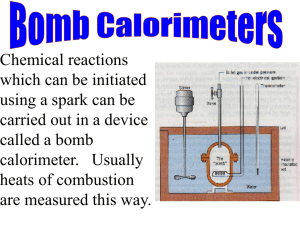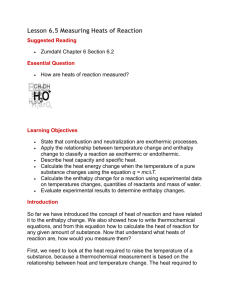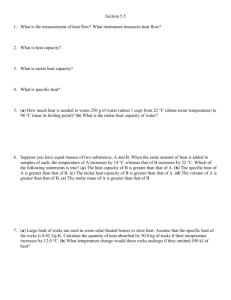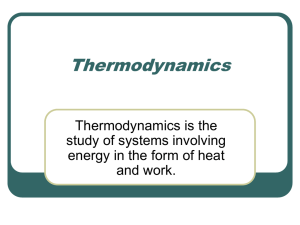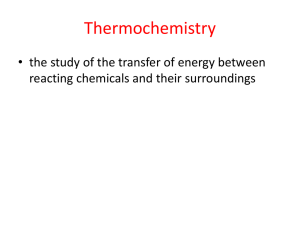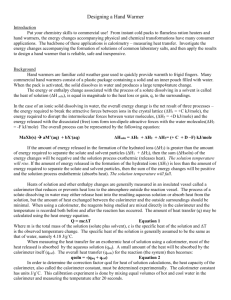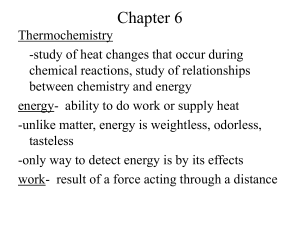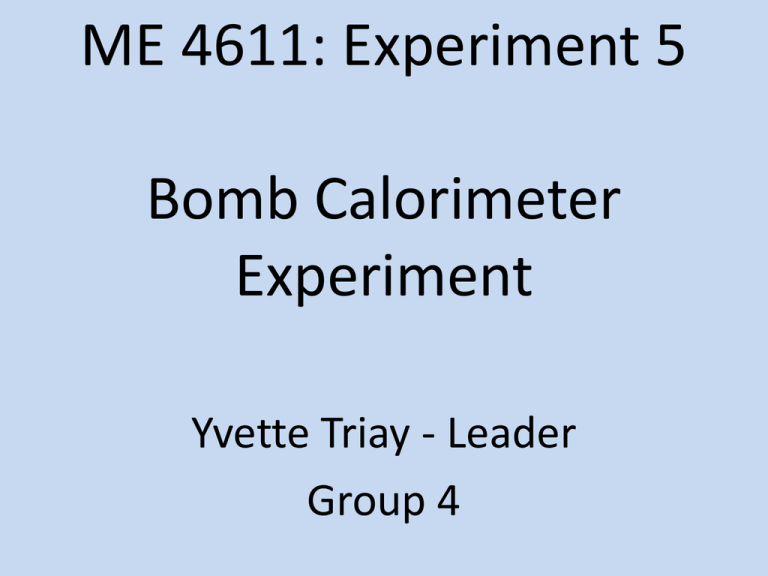
ME 4611: Experiment 5
Bomb Calorimeter
Experiment
Yvette Triay - Leader
Group 4
Purpose of the Experiment
• To understand what a bomb calorimeter is,
how to use it, and why it is useful
• To determine the thermal capacitance of the
calorimeter
• To determine the gross heat of combustion of
the samples provided
What is a bomb-calorimeter?
• Used to measure heat created by a sample
burned under an oxygen atmosphere in a
closed vessel, which is surrounded by water
• Temperature differences in water are
measured
• Thermal capacitance and heat of combustions
can be calculated with this data
Equipment:
Parr Oxygen Bomb Calorimeter
Picture taken from Parr Operating Manual: 1341 Oxygen Bomb Calorimeter [4]
Picture taken from Parr
Operating Manual: 1341
Oxygen Bomb Calorimeter [4]
Thermodynamic Background
1st Law of Thermodynamics
Q=mcvΔT
Q – heat of combustion
mcv – thermal capacitance of the system
ΔT – temperature rise
2 Tests Conducted
1) Known Fuel (Benzoic Acid)
• Calorimeter is considered
the thermodynamic system
• Find thermal capacitance
2) Unknown Fuel
• Calorimeter capacitance
remains constant
• Find heat of combustion
(mcv)calorimeter=Q/ΔT
Q=(mcv)calorimeterΔT
★ Q is the heat of combustion of the fuel and the ignition wire.
Estimate the thermal capacitance of the
system (2kg water and 3 kg stainless steel).
(Thermal Capacitance)system = m(H2O)cv(H2O) + m(SS)cv(SS)
(mcv)System = (2 kg)(4180* J/kg-K) + (3 kg)(470* J/kg-K)
(mcv)System = 9770 J/K
*
See [1] of Appendices
Predict the temperature rise for 1 gram of
Benzoic acid, which will be used as the
calibration sample.
Using Q = 26414* J/g [1], and plugging into the
equation
ΔT = Q/mcv
ΔT = (26414 J/g)*(1 g) / (9770 J/K)
ΔT = 2.7 K
* See [2] of Appendices
Appendices
[1] Cengal, Yunus. Heat and Mass Transfer: Fundamentals & Application, 4th Ed.
[2] http://www2.stetson.edu/~wgrubbs/datadriven/fchen/strain/strainchen.html
[3] ME 4611 Laboratory Manual: Experiment 5 – Bomb Calorimeter Experiment
[4] Parr Operating Manual: 1341 Oxygen Bomb Calorimeter
[5] 1st Law of Thermodynamics: (total energy entering a system ) – (total energy
leaving a system) = (change in total energy of the system)

